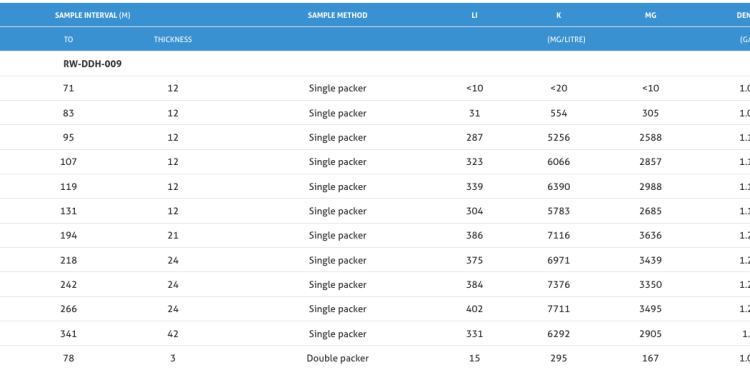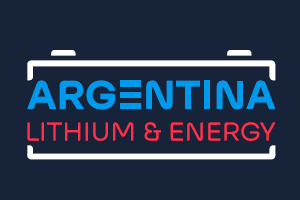Argentina Lithium & Energy Corp. (TSXV: LIT | OTC: PNXLF) has completed the ninth exploration hole at its Rincon West Project in Salta Province, Argentina, returning a 258m interval ranging from 287 to 402mg/l lithium. Two portions of this interval were not sampled, one length of 42m and a second length of 33m.
“Our ninth exploration hole has returned the highest peak lithium value and longest concentrated brine interval reported to date on the Rincon West project. This rich brine zone remains open to the north, clearly demonstrating the requirement to expand drilling in this direction in a future campaign. These nine holes have overall produced the results we anticipated when we began exploration a year ago, demonstrating that the concentrated brines from the neighbouring salt flat extend through the western basin.” stated Miles Rideout, V.P. of exploration.
Nikolaos Cacos, CEO of Argentina Lithium added “Thus far, the Rincon West project has been a great success. We acquired our initial property at Salar de Rincon only 20 months ago. We have since added two new property blocks on the salar. With the initial drilling completed on the Villanoveño II block, our team is now working with external consultants to assess all of the data collected and to build a 3D model to support future resource estimation. Additionally, our drill contractor is scheduled to begin drilling five holes on the adjacent Rinconcita II block shortly, which should wrap up near the end of this year. We will then move our exploration focus to the company’s third property in the Rincon Salar, the Paso de Sico block further north. Recent developments have shown the Rincon Salar to be one of the standout basins in the Lithium Triangle, with two neighbouring projects now entering production.”
RW-DDH-009 was executed with diamond drilling (HQ-diameter), permitting the extraction of core samples of the salar basin formations and recovery of brine samples where possible. Drilling was executed between 28 February and 23 March 2023 stopping at 341.0m depth in altered volcanics. Geophysical profiling and lining the hole with 2″ diameter PVC filters and tubing were completed on 28 March 2023. Drilling was carried out by Salta-based AGV Falcon Drilling SRL, under the supervision of Argentina Lithium’s geologists.
The company has observed that RW-DDH-009 extends drilling northwards from previous holes. From near surface to 39m depth, gravel and sand units were crossed, with rock clasts observed in the sandy sediments below 24m depth. Sandy beds, and also minor gravel laminations were observed from 39 m to 59 m. Below this followed 2m of silt and then 2m of black sands. Medium-to-fine gravels were tested between 63m and 110m depths, followed by ignimbrites to 155m. From 155 m to 238 m, a medium to coarse breccia was tested containing ignimbrite clasts. This unit exhibited fracturing and alteration at several levels. Ignimbrite, certain levels with fracturing, were tested between 238m and 266m depths, followed by a 2m thick altered fault zone. An auto breccia of ignimbrite containing igneous clasts was logged to 316m. Copper oxide streaks were observed within this unit at 289.6m. Volcanic units with increased fracturing, and also fracture filled with a green mineral, were recovered from 316m to the bottom of the hole at 341m.
All core samples recovered in drilling were retained for geologic logging. An extensive selection of samples has been sent for brine recovery testing at an independent laboratory. This analysis remains pending.
To find out more about this news release, please visit www.argentinalithium.com
To read more news like this, please visit www.theassay.com/news












